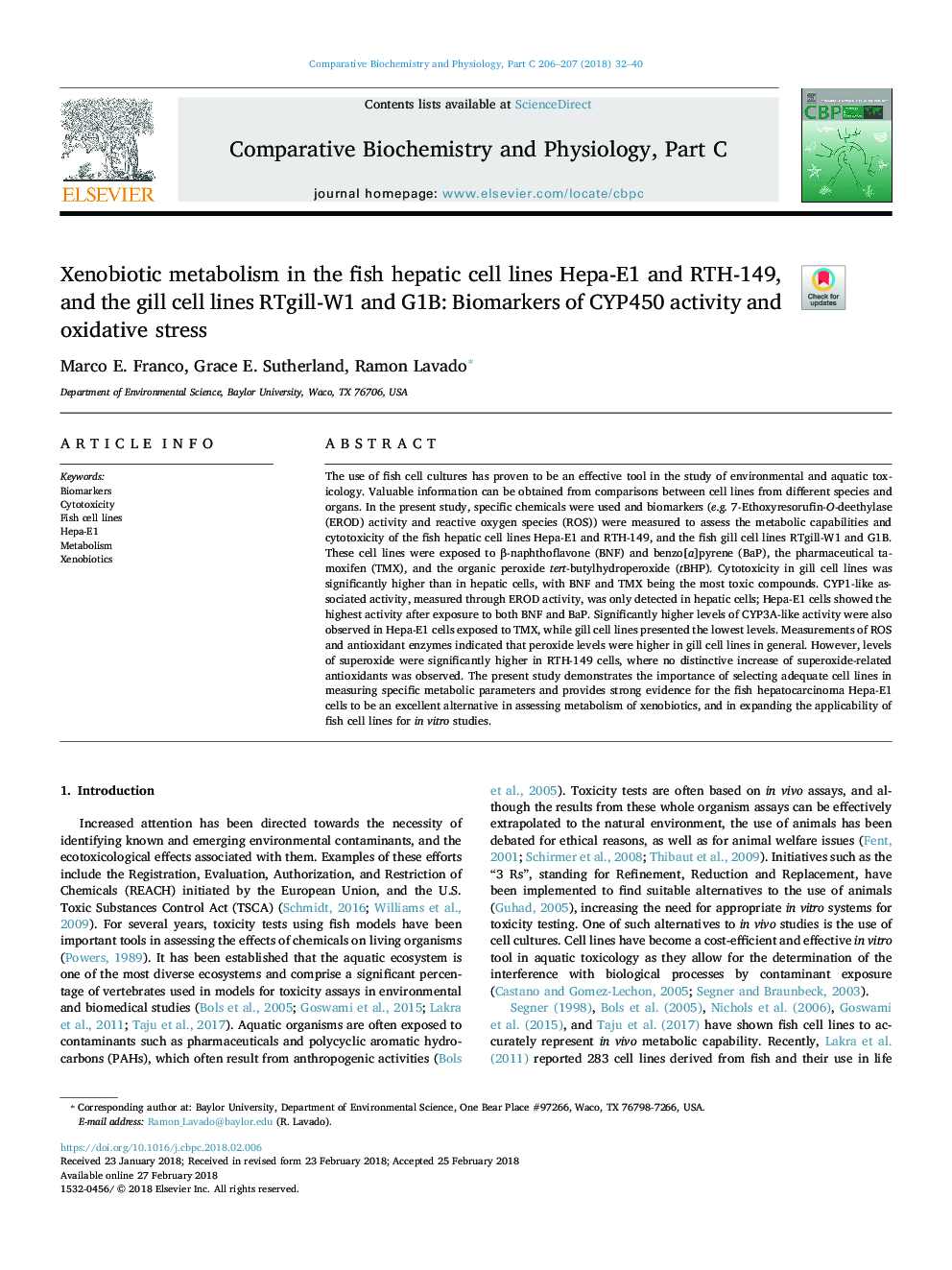| کد مقاله | کد نشریه | سال انتشار | مقاله انگلیسی | نسخه تمام متن |
|---|---|---|---|---|
| 8319015 | 1539256 | 2018 | 9 صفحه PDF | دانلود رایگان |
عنوان انگلیسی مقاله ISI
Xenobiotic metabolism in the fish hepatic cell lines Hepa-E1 and RTH-149, and the gill cell lines RTgill-W1 and G1B: Biomarkers of CYP450 activity and oxidative stress
دانلود مقاله + سفارش ترجمه
دانلود مقاله ISI انگلیسی
رایگان برای ایرانیان
کلمات کلیدی
موضوعات مرتبط
علوم زیستی و بیوفناوری
بیوشیمی، ژنتیک و زیست شناسی مولکولی
زیست شیمی
پیش نمایش صفحه اول مقاله

چکیده انگلیسی
The use of fish cell cultures has proven to be an effective tool in the study of environmental and aquatic toxicology. Valuable information can be obtained from comparisons between cell lines from different species and organs. In the present study, specific chemicals were used and biomarkers (e.g. 7-Ethoxyresorufin-O-deethylase (EROD) activity and reactive oxygen species (ROS)) were measured to assess the metabolic capabilities and cytotoxicity of the fish hepatic cell lines Hepa-E1 and RTH-149, and the fish gill cell lines RTgill-W1 and G1B. These cell lines were exposed to β-naphthoflavone (BNF) and benzo[a]pyrene (BaP), the pharmaceutical tamoxifen (TMX), and the organic peroxide tert-butylhydroperoxide (tBHP). Cytotoxicity in gill cell lines was significantly higher than in hepatic cells, with BNF and TMX being the most toxic compounds. CYP1-like associated activity, measured through EROD activity, was only detected in hepatic cells; Hepa-E1 cells showed the highest activity after exposure to both BNF and BaP. Significantly higher levels of CYP3A-like activity were also observed in Hepa-E1 cells exposed to TMX, while gill cell lines presented the lowest levels. Measurements of ROS and antioxidant enzymes indicated that peroxide levels were higher in gill cell lines in general. However, levels of superoxide were significantly higher in RTH-149 cells, where no distinctive increase of superoxide-related antioxidants was observed. The present study demonstrates the importance of selecting adequate cell lines in measuring specific metabolic parameters and provides strong evidence for the fish hepatocarcinoma Hepa-E1 cells to be an excellent alternative in assessing metabolism of xenobiotics, and in expanding the applicability of fish cell lines for in vitro studies.
ناشر
Database: Elsevier - ScienceDirect (ساینس دایرکت)
Journal: Comparative Biochemistry and Physiology Part C: Toxicology & Pharmacology - Volumes 206â207, April 2018, Pages 32-40
Journal: Comparative Biochemistry and Physiology Part C: Toxicology & Pharmacology - Volumes 206â207, April 2018, Pages 32-40
نویسندگان
Marco E. Franco, Grace E. Sutherland, Ramon Lavado,